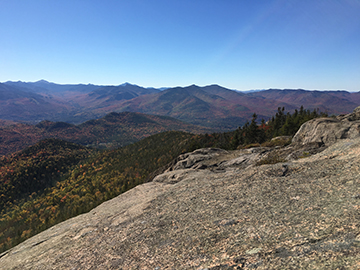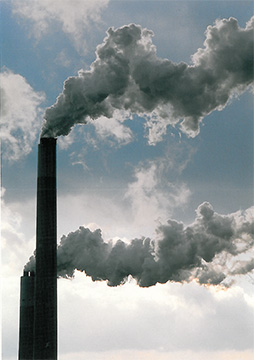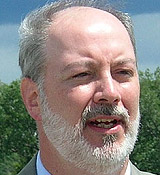
Clean Power Plan Oral Arguments Provide Reasons for Optimism
By; John F. Sheehan - Adirondack Council Director of Communications
October 11, 2016
 There are reasons to be optimistic about the survival of the federal Clean Power Plan, following the oral arguments heard by the U.S. Court of Appeals for the District of Columbia in late September.
There are reasons to be optimistic about the survival of the federal Clean Power Plan, following the oral arguments heard by the U.S. Court of Appeals for the District of Columbia in late September.
A 10-judge panel engaged in more than seven hours of questions and answers from opponents and supporters of the federal Clean Power Plan – the nation’s first regulations aimed at curbing climate change. The back-and-forth seemed to indicate that the court was unwilling to accept arguments that the program won’t work or should be scrapped due to legal technicalities.
If implemented, the plan would reduce carbon pollution from power plants to 32 percent below 2005 levels by 2030. Those emissions reductions will generate $54 billion per year in climate and health benefits, according to the U.S. Environmental Protection Agency (EPA).
The need for action to reduce climate-disrupting pollution has never been more urgent. Recent floods in Louisiana made it the fifth state in 12 months to suffer a 1,000-year flood. August 2016 marked the 16th consecutive month that set a global monthly high-temperature recorded.
The Adirondacks are no strangers to record-setting weather extremes and long-lingering damage. The state is still working to complete repairs to bridges and drainage in the Ausable and Bouquet river valleys following hurricanes Irene and Lee in 2011. Just five years later, a drought is afflicting some of the same places, leaving lake and river levels very low.
Apparently, some other states have learned little from our struggle.
Lawyers for the 27 states and a coalition of trade groups opposing the rule told the 10 judges that the Clean Power Plan might not work. The judges seemed to disagree.
A range of studies have shown that many states' power companies are already near the 2030 greenhouse gas levels EPA has assigned. Those that are not could use carbon trading to get there while keeping costs low for consumers.
Carbon trading requires all companies to obtain one government-issued carbon allowance for every ton of carbon there are allowed to emit each year. Each year, the number of available allowances is reduced until the emissions-reduction goal is reached.
Trading rewards companies that clean up their carbon emissions faster than the law requires, by allowing them to sell their leftover allowances to companies that can’t clean up as quickly under the law.
Judge Brett Kavanaugh pointed out that other EPA rules (including the federal acid rain program) have used trading programs successfully. He questioned whether now is the right time for opponents of the rule to argue that trading wouldn't work.
|
Judge Patricia Millett added that states could always come back to the EPA for a remedy if trading doesn't work out, discounting the need for judicial intervention now. Opponents made two additional arguments that appeared to fall flat. First, they said there would be disputes over how allowances were awarded, with some advocating that allowance be provided for free and others insisting that the companies purchase each one. Second, they predicted that greener states would refuse to sell allowances to coal states.
Under the Regional Greenhouse Gas Initiative (RGGI) program, power companies pay for every allowance at auctions. States can do what they wish with the revenue. In New York, RGGI allowance sale proceeds go into a fund to pay for energy conservation, green energy development and green-energy job creation. As for RGGI states refusing to sell allowances to the Midwest, this fear is unfounded. Some Northeast states have avoided selling sulfur-dioxide allowances to coal states under the acid rain program. That’s because every molecule of sulfur dioxide that falls on the Adirondacks causes damage. Sulfur dioxide generated in Ohio is more harmful to the Adirondacks than sulfur pollution generated in Massachusetts since prevailing winds carry sulfur pollution eastward. Damage occurs where the sulfur lands. But carbon dioxide doesn’t harm plants, soil and water the way sulfur does. Carbon dioxide must accumulate in the atmosphere before it becomes hazardous – by trapping heat and causing the greenhouse effect. Where it lands matters far less than how much remains suspended in the air. Thus, carbon emissions in Ohio and other upwind states are no more harmful to the Northeast than carbon emissions in Massachusetts. So, Northeast states would have no environmental reason to refuse sales to the Midwest. Finally, opponents made a more technical argument. This one relies on what Environmental Defense Fund Director of Regulatory Policy and Senior Attorney Tomas Carbonell called a “dubious reading of a phrase in an amendment to the statute.” He explains: “Opponents claim that the EPA cannot regulate climate pollution from power plants under section 111(d) at all because the agency separately regulates completely different pollutants from power plants under section 112 of the Act – including mercury, arsenic, acid gases, and other hazardous air pollution. This ‘pick your poison’ theory is akin to exempting a restaurant from food handling requirements because it is already subject to the fire code. It defies not just common sense, but the purpose and structure of the Clean Air Act.” All in all, it was a bad day in court for the opponents. The Court of Appeals is expected to rule on the case by the middle of 2017. Whether it overturns the plan or leaves the plan intact, the losing side is likely to appeal to the U.S. Supreme Court. The Supreme Court took the unusual step of halting implementation of the rule while the appeals court heard the case – something the appeals court had refused to do. However, the 5-4 Supreme Court majority that issued the stay was led by Justice Antonin Scalia, who died just a few days later. The U.S. Senate has refused to consider President Barack Obama’s nominee Merrick Garland, leaving the court deadlocked with four justices who voted to leave the plan intact and four who voted to for the stay. The Supreme Court requires only four justices to agree to hear an appeal, but it must have a majority of the court (five votes) to render a decision. If there is no new justice appointed to the Supreme Court by the time the appeals court rules, the appeals court’s decision could remain in place for years.
|
||||

 As a practical matter, who pays for the allowances makes little difference to the efficacy of the trading program. Under the federal acid rain program, each company receives for free enough allowances to cover their allowable emissions. Those that need more must buy them from a company that has more than it needs. Thus, the cleaner company is rewarded for its low emissions.
As a practical matter, who pays for the allowances makes little difference to the efficacy of the trading program. Under the federal acid rain program, each company receives for free enough allowances to cover their allowable emissions. Those that need more must buy them from a company that has more than it needs. Thus, the cleaner company is rewarded for its low emissions.



